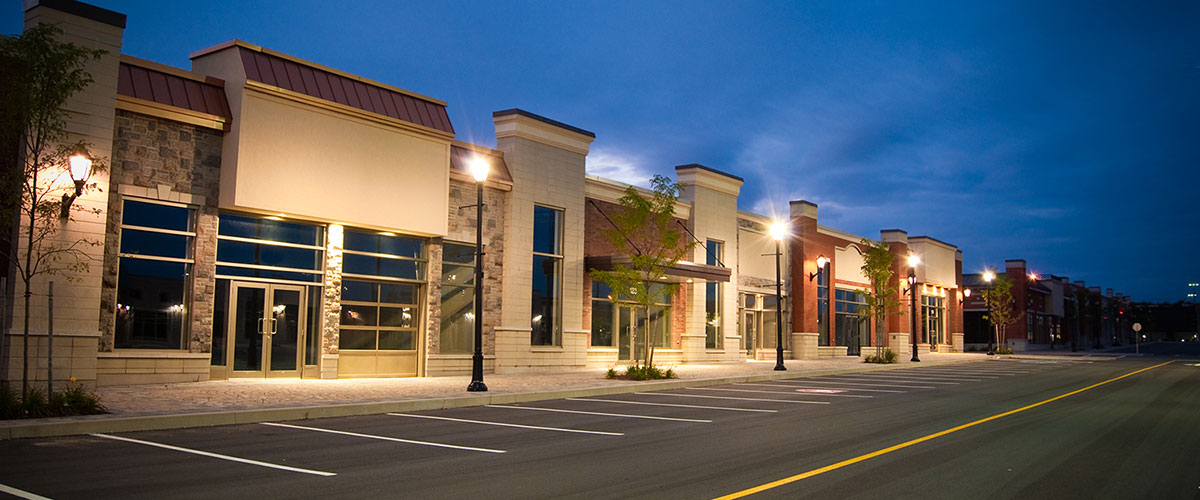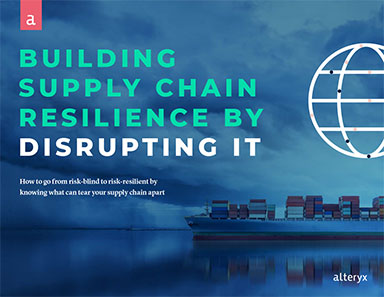6 Signs You Should Throw Out A Profitable Supply Chain Business Model

A supply chain that is currently profitable in the present, might not be profitable in the long-term.
We’ll be the first to admit that throwing out a profitable supply chain business model sounds like a good way to get yourself fired.
But there are times when something that’s currently profitable can be bad for you down the road. Just mention the name Blockbuster to anyone and they’ll know what you’re talking about.
With a world rich in data, and advanced analytics (such as predictive and prescriptive modeling) now widely available to any organization, it’s easy to see what’s working, what needs to change, and what you can do about it.
All you have to do is start looking for the indicators that might predict future challenges.
1. Your Supply Chain Depends on People for Split-Second Decisions
Before you finish reading this sentence, a bot or automation could have changed suppliers for you and avert massive losses or a damaging shortage of materials. It’s not that bots and automation are smarter than you. It’s that they’re quicker.
No matter how strong your supply chain is, if you’re not automating as many processes as possible, you’re leaving yourself open to avoidable risk. You’re also not alone.
According to McKinsey, the slowest adoption of automation has occurred in logistics, with a rate of 3-5%. Yet, those that automated their warehouses saw a savings of 15% without reducing their services.
Economics and Justifying Automation Spend
For starters, warehouse automation requires a heavy technical lift, software investment, and configuration. During economic hardship, companies have a hard time justifying the spend and time. When times are good, well, companies don’t always see a need to improve.
-
Supply chains that automated their warehouses saw a 15% saving without reducing their services
Despite already being a large, national retailer with good performance, one of our customers automated parcel deliveries, achieving a 99.4% on-time parcel delivery rate and saved 11%.
Even if your current business model is profitable, the time to automate is now.
2. Your Supply Chain Lacks Transparency
Automating as much of your supply chain as possible will inevitably make it more transparent. But, without transparency, you’re hurting your supply chain.
Delayed reports, insights based on outdated and hidden data, missing information — all of it can lead to double-checking a decision or, worse, making a decision that leaves revenue for your competition.
Everyone should work from a single source of truth, whether they’re a small team in a local warehouse or an international team spread across the globe.
Governments, healthcare facilities, and more could save billions of dollars — or hundreds of billions of dollars — by increasing transparency and reducing prices and errors in their supply processes.
Transparency includes you, your partners, and your customers. You need to have insight into your third-party partners’ contingency plans and your customers need real-time data to help them find inventory when they need it.
-
Supply chains could save billions simply by increasing data transparency
Even if your current business model is profitable, extra savings now could net you the income you need to upgrade vital equipment, add employees and/or reduce turnover, or add cash flow before a rough economic turn.
3. Your Supply Chain Fails Simulated Stress Tests
Sometimes, the thing you least expect could be the event that leaves you struggling to keep up or missing out on profit. For example, a competitor closing shop.
Normally, a competitor dropping out means more opportunity for you. But that wasn’t the case in 2009 when workers at Chalk River discovered a “pinhole-sized radioactive water leak” that forced them to shut down a nuclear reactor. Repairs that were scheduled to take a month ended up taking a year.
Chalk River used the reactor to help create medical isotopes for medical imaging equipment. The only problem is that the isotopes only lasted 12 hours after being produced, so could only be created on demand.
Consequently, a facility that produced one-third of the world’s medical isotopes shut down. This left a vacuum in the market, causing other reactors to scramble to meet demand. Rushed orders and low supplies reduced the quality of medical scans, providing patients with less-reliable, potentially more radioactive scans, effectively diminishing their quality of care and life.
With advanced analytics and automation, Chalk River’s competitors — and medical facilities — could have simulated a worst-case scenario and programmed emergency plans to help scale up production.
McKinsey reports that the number of supply-chain-disrupting events have increased in recent years and how disruption of even one supplier could have devastating effects. During the early stages of COVID-19 when China enacted quarantines, many of the world’s top companies lost access to commodities sourced directly from Asia.
And, with advanced analytics and automation in your supply chain, you can predict and prescribe solutions for just about any scenario you throw at it. Bottlenecks, slowdowns, rapid growth, policy changes, taxes, regulations, natural disasters, and more.
-
McKinsey says now is the time to stress-test your supply chain
4. Your Supply Chain Isn’t Configured for Remote Work
In 2020, thousands of companies saw themselves immediately shifting to a remote work environment to help slow the spread of COVID-19. But remote work can include people working in an office, too.
Supply chains, by nature, involve a lot of on-site work. People stocking shelves, delivering products, driving trucks, and more are hard to replace. Tracking all the information surrounding this, however, should be easier — no matter where someone is located.
Managing remote business operations facilities from a centralized location, accessing data from suppliers, partners, and warehouses, and sharing insights and aligning both internal departments and third-party partners to make decisions becomes challenging the more a company is spread out.
The global nature of supply chains opens them up to an increased risk of cyber attacks, especially as more have turned to remote monitoring software. As it stands now, C-level leaders don’t trust how their organization uses data and analytics, with 35% having a high level of trust and 92% saying they have concerns about how machine-based decisions can affect their company’s reputation.
Whether it’s now or later, at some point, your supply chain will need to be prepared for remote workers, both in and out of the office. If your supply chain isn’t set up with a data analytics platform that can provide advanced analytics while maintaining governance, now is the time.
5. Your Supply Chain Can’t Innovate or Scale Because It Avoids Risk
Healthy supply chains can innovate, scale, and take on risk. The year 2020 saw supply chains and manufacturers shifting focuses, producing masks and ventilators, investing more in vaccine research, and finding new ways to sell products during a shift.
Next year could require different innovations and scaling. Maybe new food regulations force food processing plants to find and use new ingredients and additives. Perhaps budget cuts force a company to reprogram hundreds of machines to increase efficiency. Or maybe customer demand for your product maxes out your production capacity and your third-party partners, such as suppliers.
Innovation, and scaling, requires transparency, automation, and the convergence of every piece of data, every process, and every person — across a mix of internal and remote locations.
-
But it also involves risk
If your supply chain is profitable because it avoids risk at all costs, it’s not healthy. This is what happened to Blockbuster when they were too slow to adopt streaming. This is what happened to Kodak when they were too slow to adopt digital cameras — despite inventing them. This is what happened to Xerox when they were too slow to adopt PCs.
Whether it’s the fear of trying something new during a pandemic or hurting your current profits, if you’re too afraid to try out something new because it might hurt profits, then you’re missing out on opportunities.
The good news is advanced analytics can provide insights that help you determine the likelihood of success for new initiatives, so you don’t have to go into any decision blind.
6. Your Supply Chain is Profitable Despite High Turnover Rates
If you have a profitable supply chain despite having low employee retention and high turnover rates, something’s broken and you’re not capitalizing on potential.
Employee turnover is a trillion-dollar problem. For a company with 100 employees and an average salary of $50,000, it can be a million-dollar problem.
What’s worse is that it’s an easy problem to fix. About half of employees say their employers could have done something to make them stay, and the answer usually isn’t more money. It’s asking them how they feel about their job and their future.
For supply chains, profitability might be based on your employees spending a grueling number of hours pulling data and creating reports. It could be that they’re never using their minds and creative ability to ask big questions and solve problems. It could also be, as you saw above, that the company doesn’t take on risk, which stifles innovation.
At the end of the day, your supply chain’s most valuable assets are the employees that use data, automation, and other tools to make the smart decisions that drive it forward. If they’re stuck in an endless loop of repetitive work, then you’re stuck in an endless loop of stagnant answers and insight.
Save your employees and your life gets easier, too. Not only that, but your supply chain becomes resilient and the profits you make are more aligned for the long haul.
Related White Papers
Building Supply Chain Resilience by Disrupting It
How to go from risk-blind to risk-resilient by knowing what can tear your supply chain apart. Download Now!
Article Topics
Alteryx News & Resources
Beyond COVID-19: How to Leverage AI and Analytics to Minimize “Supply Chain Disruption” Prepare Your Supply Chain for Uncertainty How to Change Your Supply Chain Inventory Planning Process 4 Ways Analytics can Augment Your Inventory Planning From COVID to Coca-Cola: Analyzing Distribution Models Create Predictive Models in Seconds for Faster and Better Forecasting Modern-Day Analytic Automation More AlteryxLatest in Supply Chain
Happy Returns Partners With Shein and Forever 21 to Simplify Returns Baltimore Opens 45-Foot Deep Channel Following Bridge Collapse El Paso Border Delays Cost Juarez $32 Million Per Day in Economic Losses Ranking the World’s 10 Biggest Supply Chains The Top 10 Risks Facing Supply Chain Professionals Walmart’s Latest Service: Ultra Late-Night Delivery Dollar Tree’s Oklahoma Distribution Center Decimated by Tornado More Supply Chain














